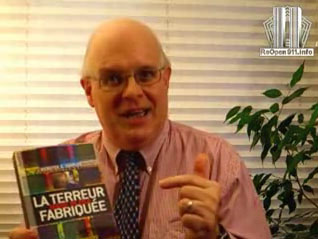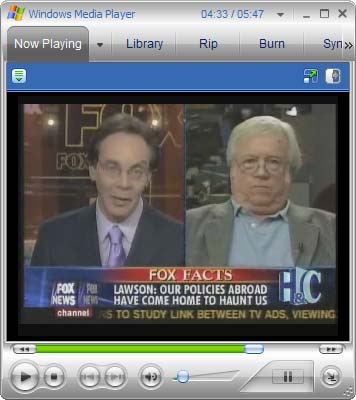Debunking the PM 9/11 Myth Bible
The question of whether the fires provided sufficient explanation for the collapse of the Twin Towers was addressed by several people soon after the event, and it was shown that this was not a sufficient explanation, but Popular Mechanics ignored these analyses (if it was ever aware of them). For example, over three years ago, on 2001-11-25 Carol Valentine published J. McMichael's Muslims Suspend Laws of Physics (also available on this website: Part I and Part II). Popular Mechanics' "experts" were apparently unaware of the points to which J. McMichael drew attention (or perhaps they were aware but Popular Mechanics chose to ignore things like this):
- The fires in the Twin Towers were not raging infernos. They gave off lots of black, sooty smoke, indicating an oxygen-poor fire. Oxygen-poor fires do not produce high temperatures.
- The Boeings which allegedly hit the Twin Towers had both taken off with enough fuel for a transcontinental flight, but most of the jet fuel in the South Tower impact was consumed in the spectacular fireball, so presumably much more fuel was available for the fire in the North Tower. If the fires were the cause of the collapse then we would expect the North Tower to have collapsed more quickly than the South Tower. But the opposite happened: the North Tower collapsed 104 minutes after impact whereas the South Tower collapsed after only 56 minutes.
- Steel is an excellent conductor of heat, so when you apply heat to a steel structure the heat spreads quickly. So the heat from the fires would have spread through the entire steel structure of each tower. The Twin Towers contained 200,000 tons of steel. Are we expected to believe that the fires from two loads of jet fuel provided sufficient heat to raise 200,000 tons of steel to the point where it became critically weak?
- Based on data provided by Corus Construction Centre, and assuming that the WTC architects followed the usual safety margins for load-bearing steel structures, we may conclude that even if the fire had heated the steel to 1022°F (550°C) that would not have been sufficient to cause the towers to collapse.
- Fire tests in open sided car parks in four countries revealed that the maximum temperature reached was 680°F (360°C), far below that needed to cause steel to weaken significantly.
However we do not have to establish exactly what temperature was reached, or could have been reached, by the burning jet fuel, since Dr. Shyam Sunder, Chief of the NIST Materials and Construction Systems Division, has stated:
Now, several of you have heard about or thought about the fact that the jet fuel would have
burned, caused the building to burn, and probably think the jet fuel played the sole role in the
fires. The jet fuel acted much like a matchstick. It was something that spread throughout the
building in those affected floors and caused ignition of the fires. But the jet fuel itself burnt in a
matter of minutes, within less than ten minutes. So what burned over the next hour, or hour and
a half, was really the contents of the buildings, the everyday contents of the buildings. — Transcript of NIST Public Meeting in New York City — February 12, 2004 (381 Kb PDF file)
So the jet fuel burned for maybe ten minutes, and thereafter it was not jet fuel that was burning but rather, as Popular Mechanics' "Fact" says, "the combustible material inside the buildings, including rugs, curtains, furniture and paper". Since both WTC 1 and WTC 2 were still standing 50 minutes after the impacts, the alleged weakening of the steel had to be due to the previous 40 minutes of burning of "rugs, curtains, furniture and paper". Popular Mechanics states (erroneously, and completely ignoring the safety margins that architects use when designing buildings) that "Steel loses about 50 percent of its strength at 1100°F". So we are expected to believe that burning "rugs, curtains, furniture and paper" can produce temperatures of 1100°F. But according to the Journal of Australian Fire Investigators (see http://www.tcforensic.com.au/docs/article10.html) paper, wood and leather ignite at 475°F (246°C) or less, far below the temperature required to weaken steel significantly. It is thus ludicrous to attempt to attribute the collapse of the Twin Towers to the weakening of its steel supports due to the combustion of "rugs, curtains, furniture and paper".
An interesting message was sent by Kevin Ryan (site manager of the Environmental Health Laboratories, owned by Underwriters Laboratories, the company who certified the steel used in the Twin Towers) to NIST regarding the temperature reached by the burning jet fuel, stating that
The results of your recently published metallurgical tests seem to clear things up ... Your comments suggest that the steel was probably exposed to temperatures of only about 500F (250C), which is what one might expect from a thermodynamic analysis of the situation.
However the summary of the new NIST report seems to ignore your findings, as it suggests that these low temperatures caused exposed bits of the building's steel core to "soften and buckle." Additionally this summary states that the perimeter columns softened, yet your findings make clear that "most perimeter panels (157 of 160) saw no temperature above 250C." ... If steel from those buildings did soften or melt, I'm sure we can all agree that this was certainly not due to jet fuel fires of any kind, let alone the briefly burning fires in those towers.





